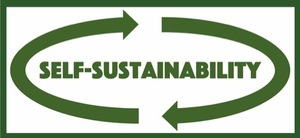Nonprofit Self-Sustainability: Which Charities Act Like Businesses?

In our Nonprofit Trend Report on Income Growth, we identified what separates the big fundraising winners from the fundraising losers in the wake of the recent national giving growth wave (16% from 2013-2016). Today, we turn our attention to another kind of revenue that most of us don’t associate with nonprofits at all, but maybe we should.
Many nonprofits are turning to traditional business models to supplement their fundraising income or, in some cases, walk away from the donation model entirely. How are these nonprofits freeing themselves from donor dependency? And which organizations should consider doing the same?
Research Method. We’ve collected over 75,000 fields of detailed organizational data over the last 2 years so we can answer questions like these. Our latest study includes data from 338 nonprofits with FY2016 income between $100K and $500M. To get at the overall impact of these nonprofits’ earned income models, we focused our analysis around self-sustainability – the percentage of annual expenses covered by earned income. This is what we found.
Median Nonprofit Self-Sustainability: 4.8%
Better Fit for Some. Median self-sustainability across all nonprofit types is essentially useless, as some program areas are much better fits for earned income models than others. Child sponsorship programs serving the impoverished don’t present natural, mission-aligned, earned income opportunities. Many camps for children in the United States, on the other hand, serve groups that can easily support a fee-based, mission-aligned, earned income model. This model is even proven capable of driving a profit. A quarter of the 2.4% of nonprofits in the study that turned a net profit on earned income were camps. (Sliding scale pricing can be applied at camps like these to limit income-based exclusion.)
Camps. Of course, not all camps are the same. For every profitable camp in our study, another had less than 20% self-sustainability. It makes sense that the socioeconomic status of each camp’s target camper group would drive these differences. Not surprisingly, the camp that represents the median camp self-sustainability level of 53% serves “individuals from diverse racial, cultural and socioeconomic backgrounds.”
By Type. Because many nonprofits intentionally serve the poor, it would make sense for camps, with their diverse camper groups, to earn more income than nonprofits of many other types…and indeed they do. Below are the top 3 nonprofit types by median self-sustainability rate:
Most Self-Sustainable Nonprofit Types
1. Foster Care
2. Counseling
3. Camps/Retreats
Different Models. Like camps, it makes sense that counseling is high on the list. People of all socioeconomic backgrounds can benefit from counseling, and many can afford to pay for it. But nonprofits can utilize business models other than receiving payments for direct services. Another big one, government contracts, drives the most self-sustainable nonprofit type of all – Foster Care. You may have been surprised to find foster care at the top of this list, but their government contracts can be substantial. Median self-sustainability in the foster care space was 20% higher than the next most highly rated nonprofit type.
Access to the Complete Study Results. If these results surprised you or you just want to learn more, subscribe to our Nonprofit Analytics database to gain access to the full study. As a subscriber, you will learn how Foster Care, Counseling, and Camp groups compare to 26 additional nonprofit types from Leadership Training to Human Trafficking. You will also learn what other nonprofit types have reached 100% self-sustainability and if the biggest nonprofits are operating more like businesses than their smaller peers. At all 3 subscription levels, you will receive the full Nonprofit Self-Sustainability Study today and 3 more Nonprofit Trend Reports we release every year to help our Excellence in Giving clients across the country give wisely.
Go to Blog Home





Add Your Comments
Reader Comments
0 comments